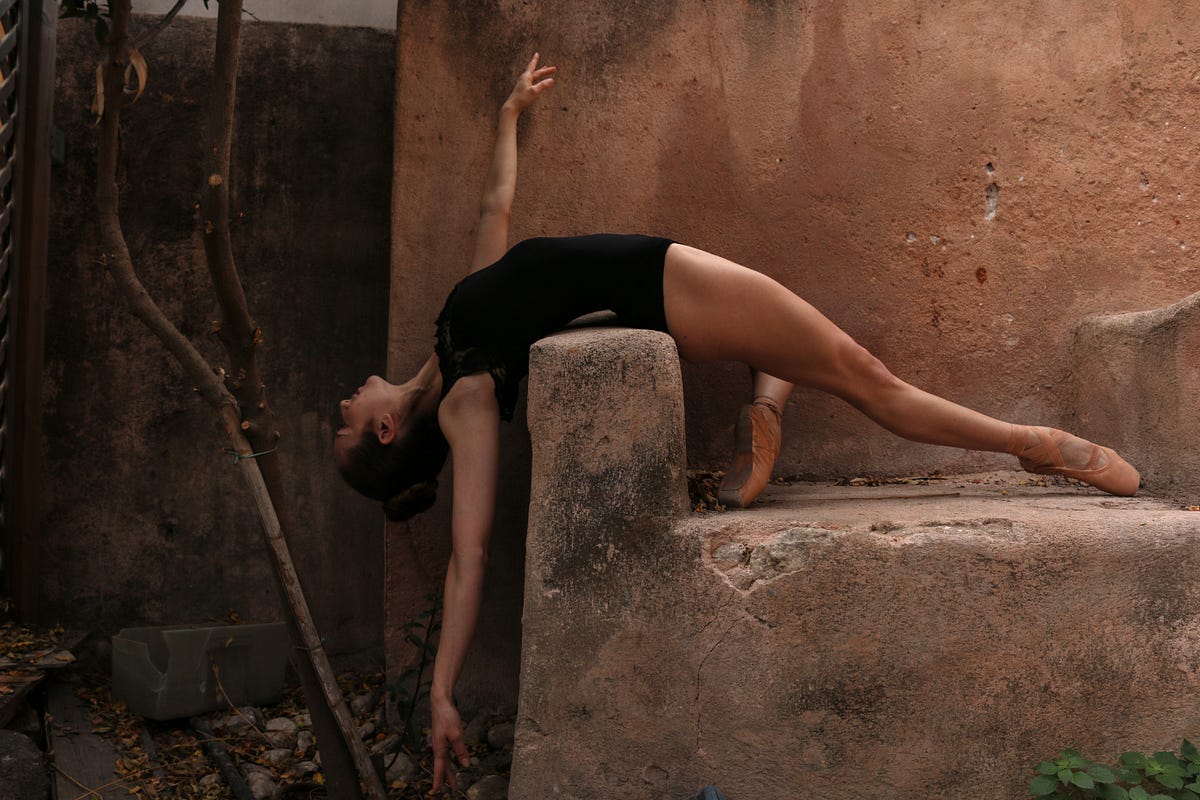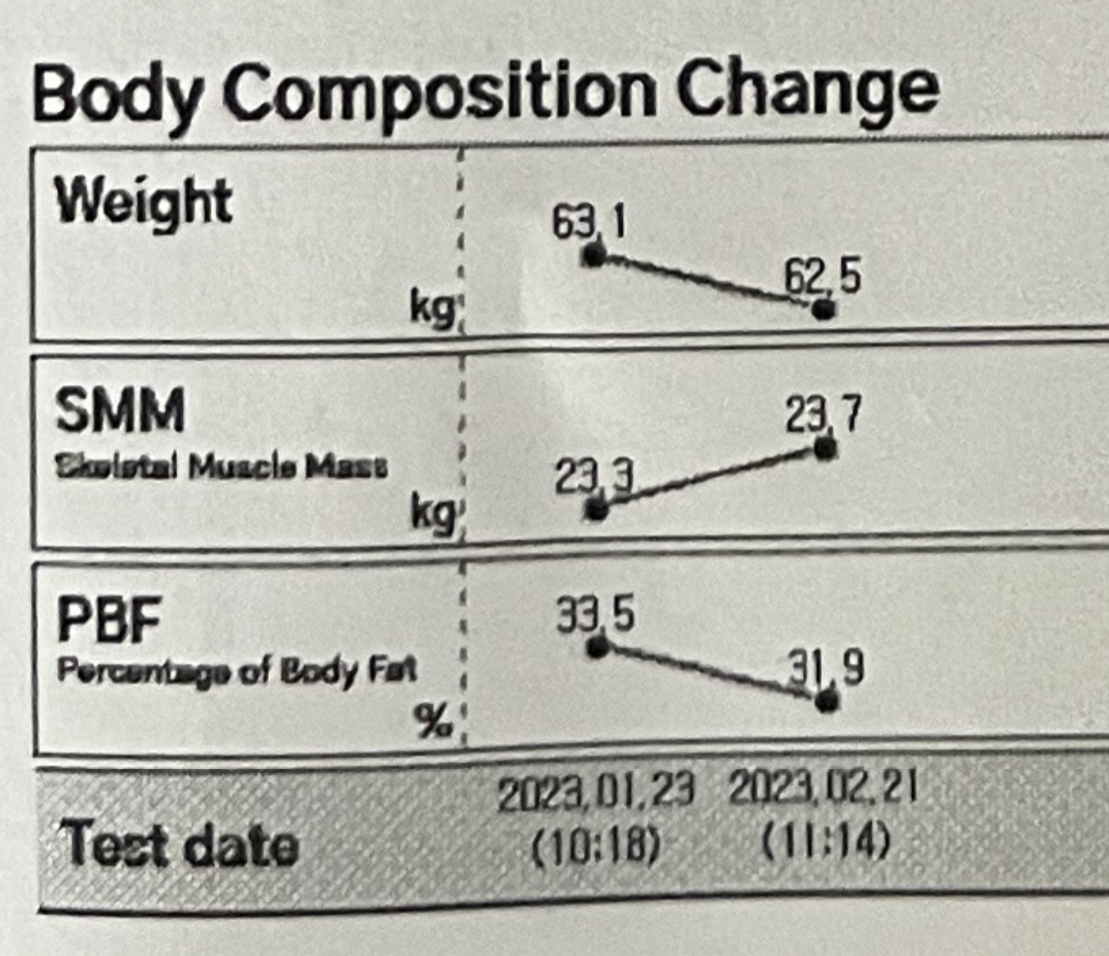How I Built Muscle And Lost Fat As A Woman in My 30s
A detailed workout and diet guide to crushing your fitness goals.

A detailed workout and diet guide to crushing your fitness goals.
After switching to a work-from-home schedule in 2020, I started a body transformation challenge for myself.
Due to the pandemic-induced lockdown, I didn’t have the choice to join the gym. I decided to make the best of the time and resources and took this as a challenge to build something from scratch.
I researched extensively before jumping to the workouts and devised my training plan with discipline and consistency as my two main pillars. I started with HIIT because my initial goal was to lose some weight.
But I kept experimenting and exploring along the way, keeping my body’s limits, increased stamina, and potential in mind. Later, I shifted to Yoga and Pilates for strength and flexibility.
In 2022, I took the plunge and started pole dancing to build my upper body and core strength.
The pole was tough. It demanded a lot from my mind and body.
But the bruises on my thighs and the sore muscles were testaments to my strength. Mastering a new dance form gave me the confidence boost I didn’t know I needed.
I knew that if I could master something as complex as this, I could do just about anything. I fell in love with the process of working out every day.

In 2023, I also started hitting the gym to gain muscle and lose fat.
I want to dedicate this post to my journey of reaching my fitness goals to help out other women in their 30s who also wish to build muscle and lose fat. Before diving in, I’d like to highlight some facts to set the stage right.
- I’m not a professional fitness expert, and I understand every individual’s metabolism, physical stamina, and genetic makeup are unique. So, what worked for me, may or may not work for you.
- You’ve got to be consistent with your routine to see visible results. Don’t forget to include rest days in your schedule. Listening to your body is the only way to persevere.
- Exercise only because you want a healthy life state and not because you’re told to have a certain body type to be acceptable.
- If you’ve any medical condition, consult your doctor before trying out any exercise routine.
Having said that, let’s find out how I worked on my fitness goals at 30 by building muscle and losing weight.
Background: Muscle gain for women
Since we’re intending to build muscles while losing fat, it’s important to follow the right plan keeping a few things in mind. The process of losing fat compounds to 80–90% of mindful eating while 10–20% of exercise.
But you don’t want calories from your food to be stored as fat. So, you must follow a three-step plan:
- Follow a strength training routine for muscle breakdown
- Stick to a calorie deficit diet but ensure to eat enough proteins to rebuild stronger muscles
- Rest by taking 8+ hours of sleep to help recover your body
A calorie deficit diet along with lifting weights signals your body to use the fat stores in the body to fuel itself and build muscles. Just don’t forget to eat enough protein to amp up the process of losing fat while building muscles.
Similar results were found in a 2016 study, where lean body mass increased among participants along with fat loss after 4 weeks of eating an energy-deficit diet and resistance training.
Strength training for women and the menstrual cycle
An important thing to keep in mind while starting a new workout routine for women is their menstrual cycle. During the menstrual cycle, our body undergoes immense hormonal fluctuations leading to variations in strength levels. This can interfere with the outcomes of the training.
But you don’t have to skip the strength training in the first phase of your cycle. In a 2019 study, Frisén et. al concluded resistance training in the first 2 weeks of the menstrual cycle helps gain greater lean body mass.
You can use different phases of the menstrual cycle to your advantage considering the following points.
- Estrogen level is at its peak during the follicular phase, and the anaerobic capacity and muscle strength remain the greatest. Studies show training during the follicular phase enhances muscle strength and mass.
- Due to hormonal fluctuations in the late follicular phase, variation in ligament laxity is observed. This could increase the risk of injury in the days leading to ovulation.
- The luteal phase is associated with the least injury encounter. But don’t be too hard on yourself after ovulation, as the progesterone level rises during this phase. It leads to fatigue, mood swings, and other PMS symptoms. This might lead to decreased performance and endurance.
You can either try different movements, focus on cardio, or reduce your training load. Tracking your cycle and understanding how you feel on each training day is the key to maximizing your performance.
The 30-day plan
Here’s the 30-day plan including the exercises, training, and diet I followed to see the visible changes in my body, mind, and life state.
1. Weight/resistance training
Strength training helps lose body fat while increasing muscular endurance and strength. It focuses on exercising muscles using some form of resistance.
You can start with lifting weights like a set of dumbbells, using resistance bands, or your body weight against gravity. If you are joining a gym or have equipment at home, you can go ahead with pull-up bars, barbells for bench press, etc.
While doing weight training, focus on strengthening the muscles of your chest, arms, shoulder, back, legs, and glutes. I began with planks, push-ups, and squats, and then incorporated lifting dumbbells.
I followed this sequence for 3-days a week and spent 1-hour pole dancing for 2 days per week.
Katie Pierson, CPT, suggests performing 10–12 repetitions of squats per set and 2–3 sets of push-ups (with 5–8 per set) to get started with weight training.
Benefits of strength training
- It works on joint stability, muscular endurance, increasing muscle size and strength
- Boosts metabolism and burns body fat
- Enhances bone density and balance while reducing chances of injury
- Builds muscle mass
2. Cardiovascular Exercise
Besides weight training, cardio has also been a part of my workouts. I dedicated 20 minutes of my cardio routine to the treadmill followed by rowing and elliptical per day for 10 minutes each. I follow this routine for 2–3 days a week.
Depending on my energy levels for the day, I set the treadmill in either of the two settings-
- Starting with 4.5 kmph, keep increasing the speed by 2 kmph every five minutes.
- A sustained 15-minute walk at 4.5 kmph at 12 incline.
Each of the variations is followed by 3–4 minutes of cool down.
The frequency might differ from person to person based on their body fat percentage and weight, metabolism, age, and calorie intake. The U.S. Department of Health and Human Services recommends moderate to vigorous intensity exercise for 150 minutes per week to maintain good health.
Cardiovascular exercises help transform stored fat into an energy source by releasing it into the bloodstream. It’s best to perform cardio after the strength training because that helps burn more calories, according to a 2007 study published in Medicine & Science in Sports & Exercise.
3. Diet & Nutrition
Along with consistent workouts, healthy eating is equally important to build muscle and lose fat. While I didn’t follow a strict diet plan, here are some pointers I took care of:
- Have unprocessed foods to keep calorie intake in check.
- Add lean protein and healthy fats to your diet. Some examples are fish, peanuts, walnuts, chia seeds, etc.
- Include 130 gm of carbohydrates per day into your diet for muscle building, recommends the Institute of Medicine.
I made sure to have balanced meals with carbs, veggies, and 1g protein per kilo of my body weight every day, extracted from natural sources, as suggested by Nancy Clark, a nutrition counselor. I consciously chose to eat only home-cooked food and had no processed food on weekdays.
Healthy snacks like makhana (foxnuts), yogurt with trail mix and fruits, sugar-free dark chocolates, etc., were also a part of my diet.
Bonus tip
Once you’re done with the workout routine, cooling down your body is essential to prevent injury, muscle soreness, or tendon stiffness. The best way to help your body recover is to incorporate yoga and other less demanding exercises, confirms Uzo Ehiogu, a specialist musculoskeletal physiotherapist.
My routine involved 20–40 minutes of a cool-down session, where I chose slow-flow Vinyasa yoga followed by 10 minutes of meditation. This helps release tension from the body and mind after an intense workout session. Yoga trainer Jason Olsan also suggests meditation promotes muscle recovery and maintains energy post-training.
Since I’m blessed with a pet dog, my workout bonus also includes 8–10K steps every day while I take her out for a walk. This contributes to better mental health and allows me to spend time in nature and bond with my pet.
The results
After following this workout routine for 30 days, here comes the most exciting part. The results were visible in my body composition and energy levels. The muscle definition on arms, thighs, and shoulders made all the efforts and dedication worth it.
Within 30 days, my body weight dropped from 63.1 to 62.5 kg. My body fat reduced from 33.5% to 31.9% and my skeletal muscle mass increased to 23.7 from 23.3 kg. People around me also noticed a difference, and everyone commented how my skin is glowing and I look happier.

Conclusion
This article was all about my physical transformation journey, and all I can say is it’s the best thing I’ve done for my health. Strength training, cardiovascular exercises, and mindful eating is my mantra for leading a healthy lifestyle.
Feel free to use this guide if you’re looking for ways to build muscle while losing body fat. I always hated lifting weights, but if I did it at 30, you can do it too.
“Your body can stand almost anything. It’s your mind that you have to convince.” — Anonymous
